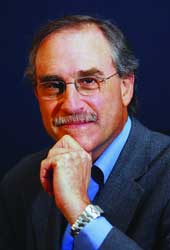New report on contractor workforce rife with flaws

The Progressive Policy Institute's recommendation to slash 750,000 contractor jobs from the government is short-sighted and fatally flawed.
Government management is an important topic that is slowly gaining traction as the 2008 election season matures. The Progressive Policy Institute recently entered the fray with its report, "Return to Fiscal Responsibility." The new report is disappointing.PPI recommends that the next administration slash 750,000 contractor jobs from the government, thereby generating $280 billion in savings over 10 years. Regrettably, both the analytical foundation for this radical, short-sighted prescription and the recommendation itself are fatally flawed.The recommendation is based almost entirely on the work of New York University's Paul Light, who claims the Bush administration has added more than 2.4 million contractor jobs to the government's "shadow workforce," bringing the total number of contractors supporting the federal government to some 8 million. Neither figure is correct or based on defensible research.For one thing, Light's analytical baseline includes all federal spending on contracts ? without bothering to distinguish between contracts for goods and those for services ? even though only the measure of service contracting is relevant to this discussion. Contractors who build planes, develop software or manufacture communications equipment are obviously not doing work that ever was or could be done by government. And spending on goods has actually grown more than spending on services during the past decade.Second, the econometric model used counts both direct and indirect jobs created as a result of defined spending or investments. As a tool to measure the regional economic impact of a new manufacturing plant, the model is terrific. As a tool for showing us how many contractor employees are doing the work of government or how much the role of contractors has grown, it is far less helpful.The analysis also fails a basic mathematical test. After all, the $240 billion spent by the federal government on services last year included a widely variable combination of billed rates ? total compensation plus overhead plus profit ? and other related project and equipment costs. One cannot directly correlate it to individual salaries.Most experts agree the private sector generally pays more than the government. Thus, it is simply not reasonable to believe that $240 billion supports a shadow workforce four times the size of the federal civilian workforce, the cost of which is close to $190 billion.Moreover, although service contracting has grown dramatically since the 2001 terrorist attacks, that growth has not occurred in a vacuum. During that same time, the government has grown by nearly two-thirds. When viewed proportionally, the government's reliance on contractors has grown only about 15 percent since 2001. Although this is significant growth, it is far from the unconstrained rush some have alleged. And almost none of that growth has resulted from the administration's much-debated competitive sourcing initiative.Finally, PPI makes the completely unsupported assumption that 750,000 contractor employees are doing work that doesn't need to be done, so the reductions can be made without increasing the civil service. PPI's assumption ignores the central role contractors play in providing critical technical and other capabilities to a government that faces enormous skill gaps and major hiring challenges. Thousands of positions exist for which the government has been unable to find people with the right skills. Where is the evidence that this long-standing problem will suddenly reverse itself?The government faces many critical challenges in the years ahead, many of them tied to the workforce and the government's ability to effectively and efficiently manage in this new era of a blended government and private-sector workforce. Even in an election season, the complexity and importance of these issues deserves a thoughtful discussion based on accurate information and sound analysis.

Stan Soloway is president of the Professional Services Council. His e-mail is soloway@pscouncil.org.

Stan Soloway
Stan Soloway is president of the Professional Services Council. His e-mail is soloway@pscouncil.org.
NEXT STORY: New leaders shouldn't disrespect the past